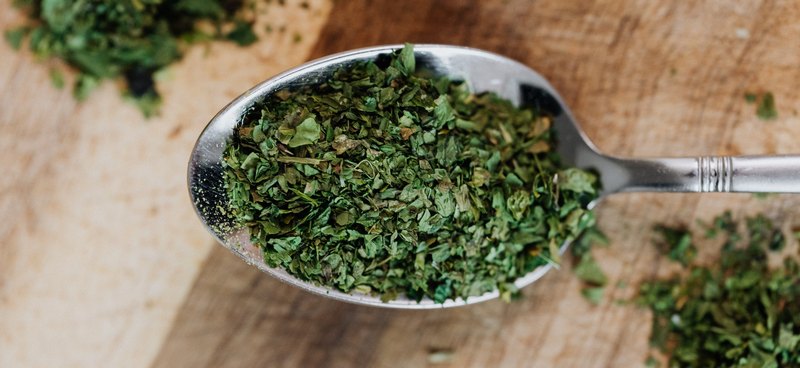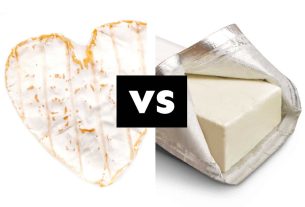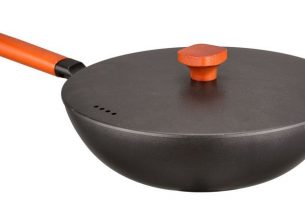Whenever you want to find out what makes any recipe spectacular, check for its blend of spices and herbs that has been used to flavor it. Oregano and thyme are both staples that are usually used in the kitchen for their versatility and easily used herbs. They may sometimes be used in the same recipes, but they are not the same plants.
This is why we need to find out what their difference is. The most defining factors for the two are the scent and flavor. Oregano has an earthy, bold, and pungent flavor while the flavor of thyme is complex, combining lemony and minty and then peppery and sweet. In this guide, we want to find out how you can identify each of these herbs and how they can be best used with their differences and similarities.
Identifying Oregano vs Thyme
It could be a bit tricky to learn about herbs because they all look similar even though they have their unique tastes. Thyme looks like a stem that has a slightly reddish tint or a green stem and very small roundish green leaves but most of its pointed tiny tips that are grown in smaller clusters spread out on the stems. Oregano is, however, a bit bushier and has a large flat and oval leaves that could at times be a little fuzzy. The scent is musty and it smells a little close to minty hay. If green, you can use thyme which smells spicier to portray odor, thyme can be well described this way.
Cooking with Oregano and/or Thyme
Professional chefs usually spend their lifetime trying to learn how they can cook using herbs. We have thousands of possible combinations that can be used in dishes. Thyme and Oregano can also be turned into herb ice cubes.
Oregano vs Thyme: Taste
Both oregano and thyme have their identifiable and very unique flavors. We have various thyme plant types and they all possess to an extent peppery, slightly sweet, lemony, and minty taste. Oregano’s flavor is very strong and is classified to be pungent. The flavor is similar to that of marjoram but it is stronger. The herb leaves in the mouth a sharp feel as if the mouth gets suddenly very clean as if all saliva has gotten evaporated. Oregano and thyme both pair well in many recipes but we have some meals that are suited for one over the other one.
Best Oregano Recipes
Oregano is usually great for bolder meat flavors such as lamb, beef, and pork, unlike thyme that is excellent for light kinds of meat. Oregano is popularly used in Mexican, Italian, and Greek food and this means that it usually goes well with legumes and tomatoes. Oregano is also a brilliant addition to your salad dressings just like how most herbs make an excellent accent to vegetables nicely.
Oregano has larger leaves than most of the other herbs and they can be used green almost like a salad or a bit similar to cilantro leaves or even basil. There will be a more compact flavor when larger leaves are used instead of dried or diced oregano. This gives a very lovely burst by the time you consume it but it will not transfer the flavor into the entire meal just like what happens when you use oregano in sauce or broth. Some herbs usually pair excellently well with oregano and they include thyme, garlic, bay, marjoram, mint, parsley, cilantro, and basil.
Best Thyme Recipes
It is classified that thyme is considered to be an unobtrusive, light herb that gives its flavor to various dishes, most especially chicken as well as veal for vegetables and meat. Thyme is usually used to marinate vegetables and meat, giving them its subtle flavor. Thyme is popular in dishes like Creole such as Gravy, Southern or Jambalaya rice, and Chicken Creole. For herbs that can pair with thyme, garlic, bay or basil, tarragon or sage, rosemary, oregano, or marjoram all go well with thyme.
Thyme and Oregano Health Benefits
Oregano Benefits
As a traditional or an alternative method of healing, oregano works as medicinal herbs. It is an herb that contains a lot of antioxidants, antiviral, and antibacterial. Some studies show how effective oregano can be and that involves oregano oil rather than a fresh or dried leaf that is easy to find.
Difference Between Oregano Oil and Oregano Leaf
Whenever you are using oregano to cook, you are likely to use leaf either dried or fresh. Contained in the dried portion could be some stems where its final product is crushed up to some tiny pieces to make the stem not distinguishable from the leaves.
Usually, oregano oil can be pressed out from the stems and leaves of oregano which results in highly concentrated oil. This oil is very potent and should not be used unless it is first diluted because it could cause burns when used topically on the skin or when ingested in the throat or tongue. It has several health benefits when it is used in recipes or diluted with some other oils.

How to Take Oregano Oil
This oil is usually available as either a liquid essential oil or in capsules. When the capsules are with you, follow the instructions and use them according to what was written on your label. There are several options for you if what you have is the liquid oil. First, dilute it with some other oils like grapeseed oil or olive oil if you want to topically use it on skin infections or conditions. Use one teaspoon of oil carrier per one drop of your oregano oil. Ensure to combine it well and rub it on the area affected on your skin.
To use oregano oil to fight against cold or perhaps boost the immunity, place some under the tongue to quickly absorb. To protect the mouth, first, dilute it by mixing an equal ratio of grapeseed oil or olive oil with it. In order to prevent the oil from lingering in your mouth and then cause the reaction of irritation, rinse the mouth well some minutes after using. You may also dilute the oil by simply adding a drop into your glass of water and proceed to drink it.
Thyme Benefits
Thanks to its constituent of antioxidants and vitamins, some benefits associated with plants include immunity. This is the case for thyme and it is an excellent Vitamin A and C source that are both known as a good source that boosts immunity. Thyme also has a great way of benefiting the skin and it has been studied that it can be used to heal prevent acne and pimples better than the majority of some commercial products.
Thyme can also work well as a disinfectant for both the body and home because it is antifungal and it helps to keep mold from high-humidity living spaces when added to cleaning products. Thyme also repels all pests such as microbial viruses and bacteria, mosquitos, rats, and mice. One other thing is that thyme has a great smell that can help lift someone’s mood and it can be spritzed around the house having wide range of benefits as an essential oil that has been diluted.
Related Questions
How to make thyme tea?
This tea has the great antiviral and antimicrobial quality and it tastes very delicious that it is so great for the weather. You can either make your thyme tea from fresh or dried thyme. One thing you should always remember is that hot water should be used, not boiling water. The nutritional constituents of your herb will begin to degrade once the water has a temperature of about 200°F. Boil water and allow it to become cool for about 5 to 10 minutes before you pour it over the thyme. Use two to three sprigs sized to fit your mug if you are dealing with fresh thyme. For dried thyme, add two teaspoons to your tea infuser ball. You can enhance the tea by adding honey or ginger.
Is growing oregano from seed hard?
It is easy to grow oregano either by trimming a well-established growing plant or from seeds. The seeds a very small and looks almost like dust. The seeds love soil that is well-drained but that is also simple to take care of. It takes about two weeks for them to germinate and then you can use fresh oregano in your recipes.
What are the benefits of oregano tea?
For some minor health problems, you can use oregano tea to solve them. This tea is usually used to ease cough and soothe a sore throat. You can also use it to solve some other digestive issues and to relieve nausea. It is known to have anti-inflammatory properties with a lot of antioxidants that can help boost overall health and the immune system. It also helps to fight against flu and colds, fulfilling its antibacterial and antiviral properties.


